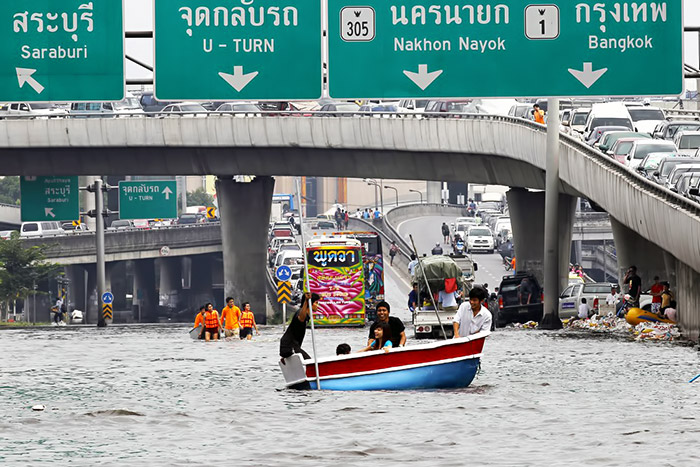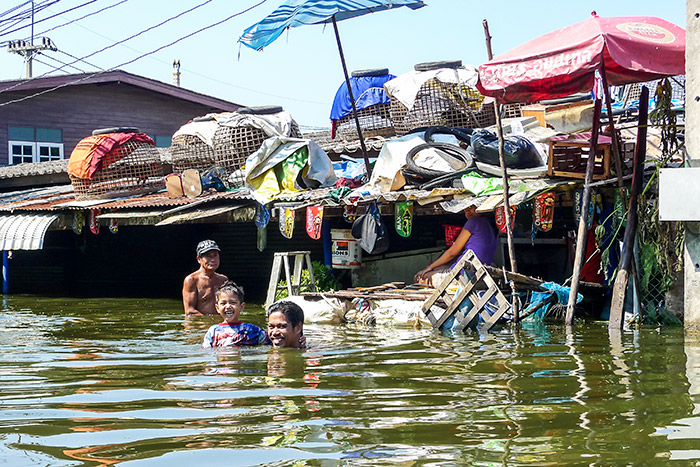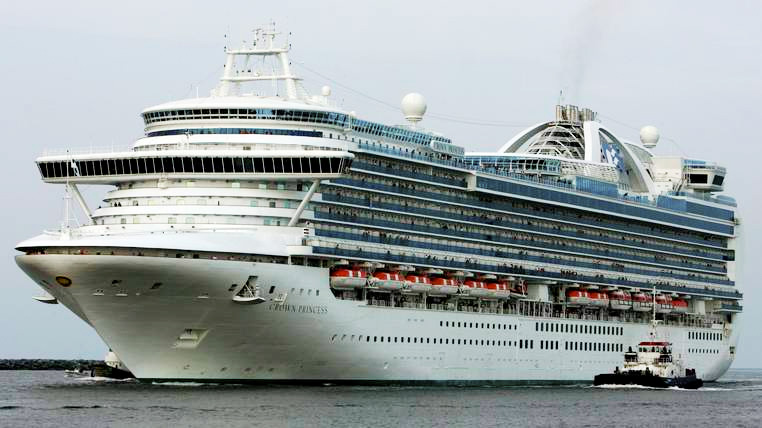In the past, Bangkok has been notorious for regular destructive floods. Of course, for a city which has been called the Venice of the East and which is said to be sinking at a rate of several centimetres per year the possibility of flooding is widely accepted by both insurer and insured.
But floods can be highly destructive as demonstrated by the 1986 and 1995 Bangkok floods, and in 2011 when almost the whole of Thailand suffered its worst ever flood, with damage, insured and uninsured, estimated to have cost several billions of US dollars.
Even if you are insured, the damage suffered in a serious flood can have disastrous consequences for your business:
- Removal of debris
- Cleaning-up costs
- Lost orders
- Wasted management time
- Dissatisfied customers
- Lost revenue
The chance of loss and the consequences should a loss occur can be minimised with a few simple flood prevention measures.
Flood prevention – Raise floor levels
 Many roads around Bangkok have been raised to prevent flooding. While this has improved traffic flow it may have caused increased problems for adjacent properties which can no longer drain off into lower level surroundings. If you cannot physically raise the level of your premises, make sure that your machinery and stock are raised above the highest recorded flood levels by at least 20 centimetres.
Many roads around Bangkok have been raised to prevent flooding. While this has improved traffic flow it may have caused increased problems for adjacent properties which can no longer drain off into lower level surroundings. If you cannot physically raise the level of your premises, make sure that your machinery and stock are raised above the highest recorded flood levels by at least 20 centimetres.
The simplest way of raising stock is the use of pallets, but remember a pallet is only 20cms high. If previous flood levels at your premises have exceeded this, two or even three levels of pallets may be necessary.
Apart from physically raising stock above the water level, pallets have the additional advantage of allowing the free run off of any accumulated water making natural drainage or pumps far more effective. They also speed up the drying out process by allowing air currents.
Raise electrical equipment and supply sockets
Floodwater can do substantial damage to electrical machinery, causing short circuits and corrosion, which may make delicate machinery irreparable. If your machinery does not operate, your production lines will be down long after the floodwater has receded and your revenue and profitability will fall. Contrast such a situation with the opportunity provided to a business which has taken proper precautions and whose production lines remain operative when their competitors face catastrophe.
But machinery damage is only one issue. Every year fatal accidents occur when floodwater reaches the level of power supply outlets and staff are electrocuted. It is essential to raise power supply outlets well above flood levels.
Perimeter areas
Flood prevention measures should always include ensuring that building walls are in good state of repair and unnecessary openings are sealed. The same applies to boundary walls around outside storage compounds. Sandbags should be readily available to block water flow through gates or other boundary openings.
Drains
Precautions taken at the perimeter of the compound will be of little use if drains within the compound back up with storm water. Indeed, the sandbags you have installed may hold the water in the compound and prevent drainage. Ensure that all internal drains can be isolated to prevent back up.
Goods in the open
 If possible, you should ensure all stocks are stored inside warehouses throughout the flood season. However, outside storage is often a necessity and is probably safer than storage in basement levels, which are prone to flood. Placing goods in the open on tarpaulins and raising the edges of the tarpaulins to form a waterproof container can protect stocks stored in the open from flood in the same way that tarpaulin covers will protect stocks from rain. The tarpaulins should be carefully inspected to ensure that they are in perfect condition before use.
If possible, you should ensure all stocks are stored inside warehouses throughout the flood season. However, outside storage is often a necessity and is probably safer than storage in basement levels, which are prone to flood. Placing goods in the open on tarpaulins and raising the edges of the tarpaulins to form a waterproof container can protect stocks stored in the open from flood in the same way that tarpaulin covers will protect stocks from rain. The tarpaulins should be carefully inspected to ensure that they are in perfect condition before use.
Install pumps
As water accumulates within a building or compound, it is likely necessary to pump it out. This may certainly become necessary as floodwater recedes and basement areas need to be cleared to assist drainage and ventilation. Have adequate pumps not just available, but ready, tested, tried and known to operate.
Basements
Be prepared for the flood. Clear basement storage areas early.
Emergency and contingency plans
Make plans to prepare for that undesirable event. With well-written emergency plans, everyone will know what they must do in an emergency. All necessary personnel will be advised and panic will not arise. But planning on its own is not enough. Practice will allow the plan to operate. Regularly test your emergency procedures and review their reliability.
Contingency plans will identify the procedures to be adopted following a catastrophe to return your business operations to normal as quickly as possible. These may include pre-evaluation of alternative premises, availability of key equipment, notification and transportation of staff and even the simple notification to customers and suppliers of a temporary change of address.
Clean drains
Flash flooding can cause substantial damage and is easily avoided. Clear drains of leaves, vegetation and other waste regularly, especially before and during the rainy season.
Gutter and roof pipes should be regularly checked to ensure they are clear of obstruction and in good condition.
INSURANCE
But . . . even with sound flood prevention measures in place, make sure that you are properly insured.
Trafalgar can help with sensible risk management and flood prevention suggestions to minimise damage and provide best advice on arranging appropriate insurance protection. Please contact us for further information.









